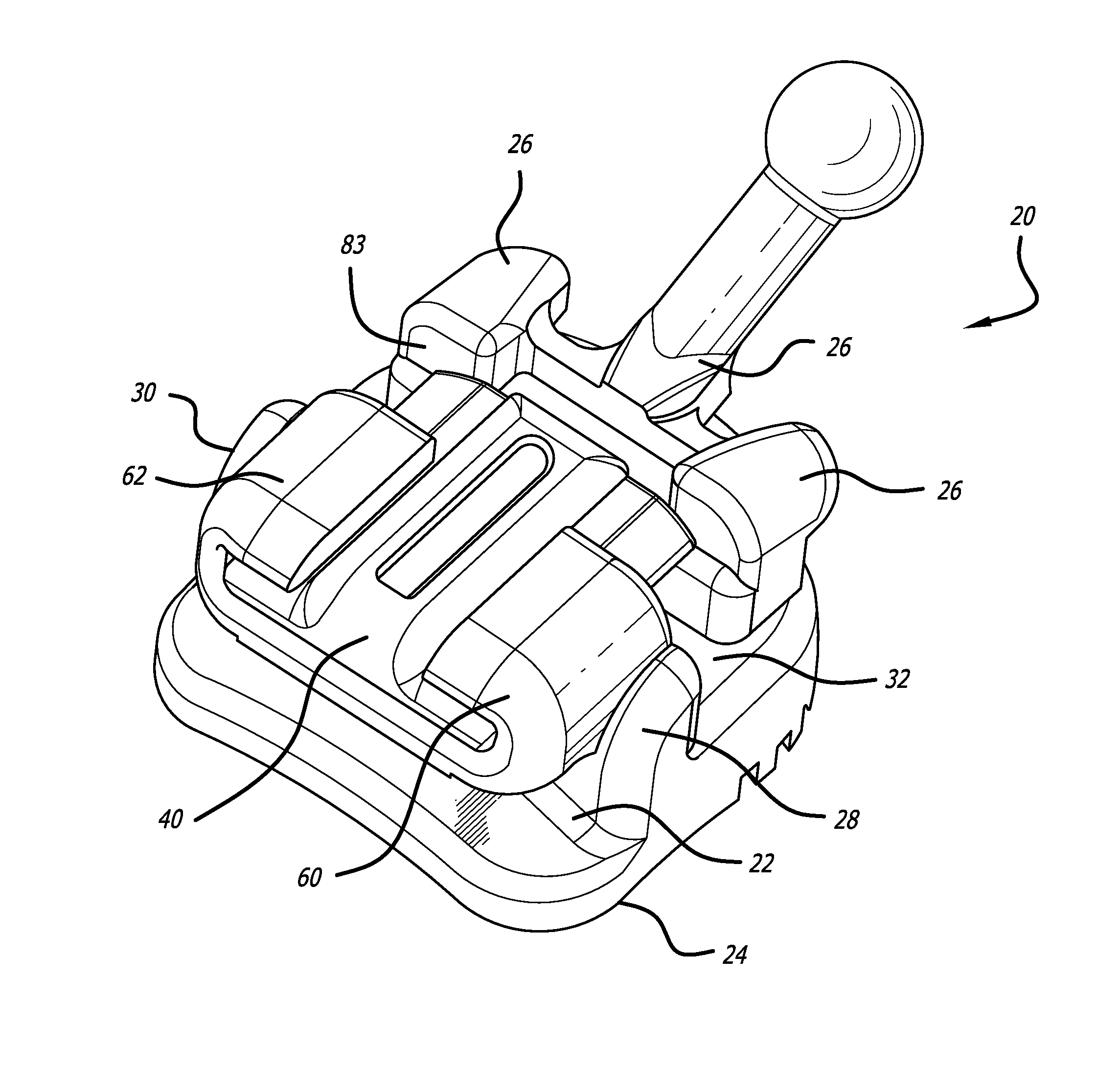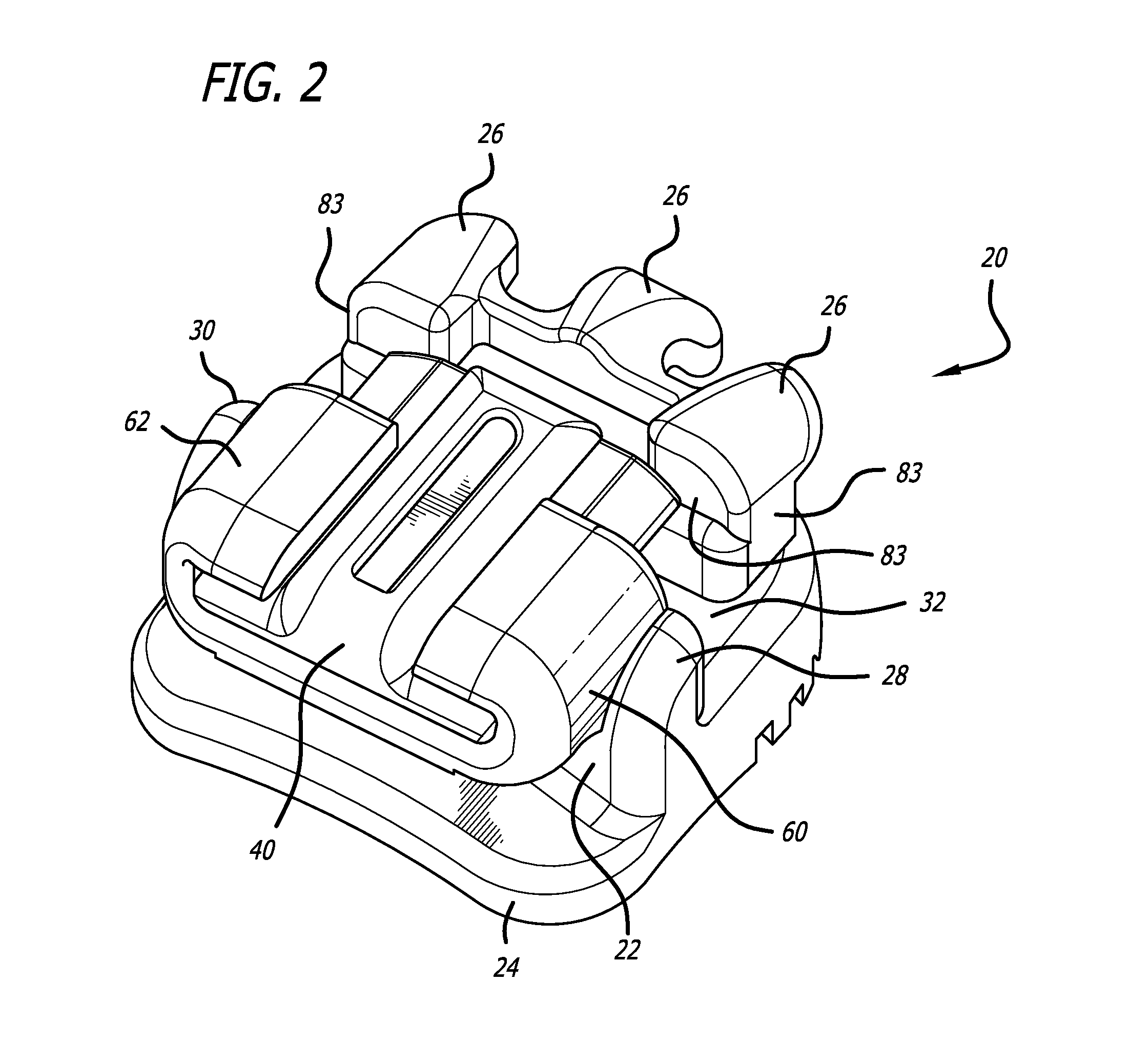Self-ligating orthodontic bracket
a self-ligating, orthodontic technology, applied in the field of self-ligating orthodontic brackets, can solve the problems of time and cost, introduce new difficulties and concerns, discoloration and stain, etc., to reduce the likelihood of any increase tensile strength, and reduce the likelihood of force being transferred to the patient's tooth
- Summary
- Abstract
- Description
- Claims
- Application Information
AI Technical Summary
Benefits of technology
Problems solved by technology
Method used
Image
Examples
Embodiment Construction
[0052]A new bracket design includes a self-ligating gate in order to provide passive archwire correction to a patient's teeth. In keeping with the invention, as shown in FIGS. 1-8, an orthodontic bracket 20 includes a bracket body 22 and a base 24. In this embodiment, the tie wings have a tri-wing design 26 which provides for a low profile in the labial-lingual height of the bracket. One advantage to the tri-wing design 26 is to enable the placement of the elastomeric chain and or traditional ligatures over the archwire slot without contacting the archwire. Importantly, if the elastomeric parts touch the archwire, they will add frictional resistance to the bracket system and thereby impair sliding mechanics. Accordingly, the tri-wing design 26 eliminates the possibility of an elastomeric touching the archwire during the correction process. A tri-wing design 26 on a self-ligating bracket is new and permits the orthodontist to use chain elastic to properly finish treatment without com...
PUM
 Login to View More
Login to View More Abstract
Description
Claims
Application Information
 Login to View More
Login to View More - R&D
- Intellectual Property
- Life Sciences
- Materials
- Tech Scout
- Unparalleled Data Quality
- Higher Quality Content
- 60% Fewer Hallucinations
Browse by: Latest US Patents, China's latest patents, Technical Efficacy Thesaurus, Application Domain, Technology Topic, Popular Technical Reports.
© 2025 PatSnap. All rights reserved.Legal|Privacy policy|Modern Slavery Act Transparency Statement|Sitemap|About US| Contact US: help@patsnap.com



